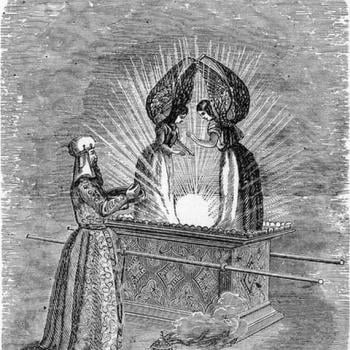And speaking to those in our day, Mormons as well as those who are not, the Book of Mormon says:
I know that ye do walk in the pride of your hearts; and there are none save a few only who do not lift themselves up in the pride of their hearts, unto the wearing of very fine apparel, unto envying, and strifes, and malice, and persecutions, and all manner of iniquities; and your churches, yea, even every one, have become polluted because of the pride of your hearts. For behold, ye do love money, and your substance, and your fine apparel, and the adorning of your churches, more than ye love the poor and the needy, the sick and the afflicted. . . . Why do ye adorn yourselves with that which hath no life, and yet suffer the hungry, and the needy, and the naked, and the sick and the afflicted to pass by you, and notice them not? Yea, why do ye build up your secret abominations to get gain, and cause that widows should mourn before the Lord, and also orphans to mourn before the Lord, and also the blood of their fathers and their husbands to cry unto the Lord from the ground, for vengeance upon your heads? (Mormon 8:36-40)
That kind of talk has not been merely rhetorical window-dressing, though what it has meant in practice has varied considerably over the history of the LDS Church.
Like many others, 19th-century Mormons experimented with various forms of wealth-sharing. Less than a year after the organization of the LDS Church, in February of 1831, Joseph Smith received a revelation on the subject that we call "the law of consecration" (D&C 42:30-34.)
The ways in which that law has been practiced have varied considerably from the time of Smith, through that of Brigham Young, to the present. Many of the early attempts were unsuccessful. But the general thrust of that revelation has been the same: Mormons are expected to treat their wealth as property over which they have stewardship and to use any excess "to administer to the poor and the needy" (D&C 42:34).
So, though present-day Mormons practice this law in a less rigorous form than Smith and Young envisioned, the law of consecration is behind practices such as giving a fast offering over and beyond whatever we pay in tithing. Mormons are supposed to fast for two meals on the first Sunday of each month, and an amount at least equal to the cost of those meals is supposed to be donated for the local congregational leader (the bishop) to use to help the poor within the boundaries of his congregation (called a "ward"). That's the fast offering.
As a result of this offering and others (such as offerings for missionary work and additional offerings for humanitarian aid), Mormons who meet the LDS Church's expectations contribute not only the 10 percent of their income required for tithing, they contribute an additional amount, determined solely by them, to help those in need within their ward.
Any fast offerings not needed for a particular congregation are aggregated at higher levels of administration in the Church and used for other welfare needs: to help wards where more is needed than has been gathered in fast offerings; to purchase, staff, and run LDS farms, which produce food for the Church's current private welfare system; for food production plants as well as store-like outlets for distributing that food; for outlets for good used clothing, and furniture; for the job placement services offered globally. These donations are also used in the millions of dollars of humanitarian aid distributed annually to disaster victims and others in need.





